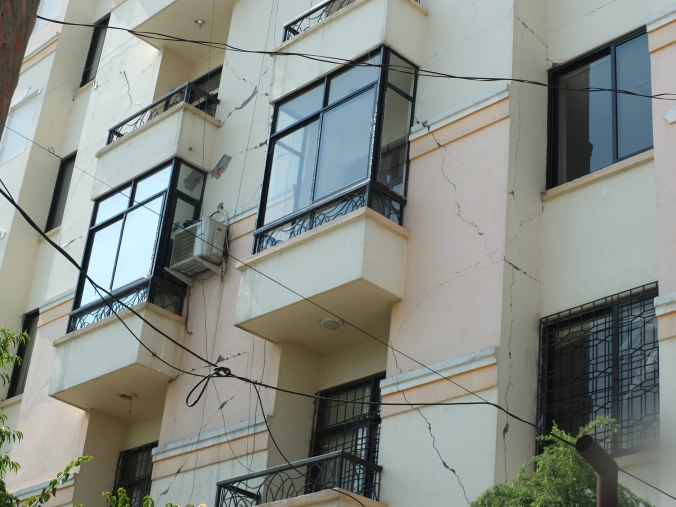
When your partner rolls over in bed it feels a lot like a tremor. The simple movement of a leg or the adjustment of a pillow sends mini aftershocks through the mattress, which at 2am feels a lot like the beginning of another quake. In the middle of the night its hard to be rational about these things. Sleeping through the night has been tricky for a while, after the quake its been more challenging still. Before the second quake, it was sort of comforting that the aftershocks were rapidly decreasing in magnitude and frequency. We felt them, paused to look at one another in the eye–an unspoken did you feel that?— and then continued with what we are doing. Since the second quake, we know that the earthquake is not just a slowly dying beast, but one that can roar back to life at any time. The ramifications of that mindset are everywhere….and its not just the bed springs that keep us on edge. After nearly a month of living in an earthquake zone, here are a few of the challenges:
Large earthquakes can bring a lot of after quakes. I had no idea how many:
Nepal has had:
2 earthquakes today
33 earthquakes in the past 7 days
109 earthquakes in the past month
120 earthquakes in the past year
Large aftershocks trigger their own aftershocks, sometimes leaving you with the sickening feeling that this will never end.
Feeling after quakes all the time. Everyone says, “Was that me?” ( or was that really a quake?) Sometimes I’ve felt it, sometimes not. And I do it too. For my own sanity, I keep a bottle of water at eye level on the windowsill next to my desk. I’ve become super sensitive to the noises and rumblings of the building. I can feel and hear when pumps or AC motors turn on, and my eye automatically checks the water for movement.
The noise. When I think back to the major quake, I don’t remember any noise except the thud of my own heart and other people screaming. But there is a noise that comes with the quake. Some people say they hear a train coming, I hear rumbling and a bang. Here in the middle of noisy Kathmandu there are plenty of unexpectedly slamming windows, rumbling trucks, or generators clunking back on that set of an alarm in my head. I don’t run screaming from the building, but the hairs stand up on my arms.
The fear of other people. I don’t like going out in public much at the moment. I go, but now I particularly avoid being around too many people. At the slightest tremor, they panic and scream, and waves of hysteria really don’t help. I don’t need to add being trampled to death to the list of dangers.
Birds. A lot of the CCTV and tourist video captures the sudden flight of birds that take off seconds before we feel the quake. They sense it before we do and startled crows are now another way to make you twitch.
Is it safe? A year ago we went to a movie on the 7th floor of a Kathmandu shopping mall. After, as we left, the city power went out and the generator took way too long to turn on. We stumbled around in a dark passageway that was blocked with boxes and trash. It felt like the most unsafe building in the city and we never went back. Apart from this incident, we’ve felt pretty safe exploring the city, enjoyed historic temples and the old Rana palaces that are now libraries and restaurants. Before, an assessment was based on whether a place would have decent service or not make us sick. Now I’m checking it for cracks and an exit strategy.
Exhaustion. We work, function, cook, garden, shower and mostly carry on as normal but are completely spent by 8pm. I don’t understand why I’m exhausted as though I’ve been carrying bricks all day… until I remember the disturbed sleep and the weight of all the stresses above – then it sort of makes sense.














